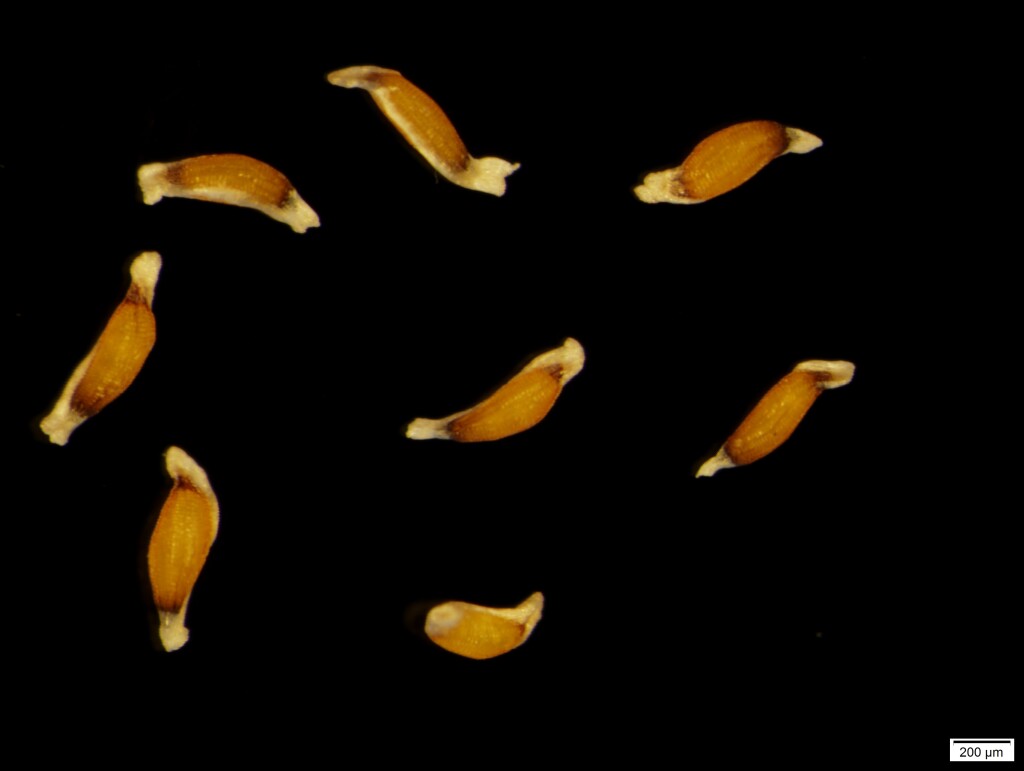Juncus procerus
E.Mey.Densely tufted robust perennial with horizontal or ascending rhizomes. Cataphylls broad, loose, brown to reddish-brown towards the base, to c. 40 cm long. Culms erect, dull or bright green, c. 150–250 cm high and 3.0–10.0 mm diam.; striations (70–)80–160, crowded, not strongly raised; pith interrupted, with large air spaces (rarely with small air spaces); stomates superficial. Inflorescence rather compact, flowers scattered or clustered (but rarely forming separate subglobular clusters); primary bract continuous with culm, to c. 30 cm long; secondary bract acuminate, more than 10 mm long; prophylls present. Tepals stramineous, 2.0–3.0 mm long; stamens 3, anthers c. 0.4–0.8 mm long. Capsules with an obtuse or flattened stramineous to reddish-brown apex, equal to or exceeding the tepals, 2.0–3.0 mm long. Flowers mostly Oct.–Dec., seeds shed mostly Dec.–Mar.
Wim, GleP, VVP, VRiv, GipP, OtP, WaP, Gold, CVU, GGr, DunT, NIS, EGL, EGU, WPro, HSF, HNF, OtR, Strz, MonT, HFE, VAlp. Also SA, NSW, ACT, Tas. New Zealand, Chile. A relatively common species in southern Victoria. Occurs in or at the edge of permanent or seasonal water bodies, such as swamps, dams, roadside swales. Also occurs in riparian vegetation and sometimes extends into moist pastures.
Close to Juncus gregiflorus but differs in having broader culms with more numerous striations, and a more condensed inflorescence that generally does not consist of separate subglobular clusters of flowers. Juncus procerus is also similar to J. brevibracteus, but can be distinguished by the characters provided in the key. Juncus pallidus and J. ingens are sometimes confused with J. procerus because of their robust stature, but are readily distinguished on a range of characters. Hybrids with J. gregiflorus and J. pauciflorus are known.
Albrecht, D.E. (1994). Juncus. In: Walsh, N.G.; Entwisle, T.J., Flora of Victoria Vol. 2, Ferns and Allied Plants, Conifers and Monocotyledons, pp. 197–233. Inkata Press, Melbourne.
 Spinning
Spinning


